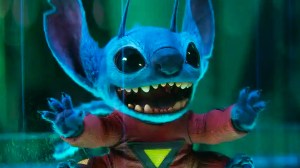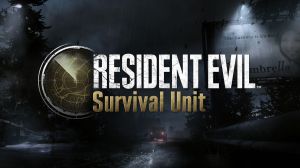Last month, prose novelist Clay McLeod Chapman and artist Jey Levang introduced readers to the world of BOOM! Studios’s Lazaretto, in which a deadly outbreak happens at a university and the whole place is turned into a quarantine zone.
Videos by ComicBook.com
Citing movies like The Crazies and books like Lord of the Flies, Chapman and Levang have set out to tell an ambitious story over the course of a five-issue miniseries, with #2 on the stands today.
Chapman joined ComicBook.com for five quick quesitons about what makes the book tick, which you can check out below.
You can pick up the first two issues of Lazaretto at your local comic shop or digitally via comiXology.
The best horror stories of the modern era, like from Dawn of the Dead to Get Out tend to deal more with how society deals with evil than the evil itself. Was that what you were going for?
Well it’s funny, I mean you mention Romero, and for me there’s this other film he did way back when, kind of post-Night of the Living Dead, but it’s called The Crazies. AKA ‘Code Name: Trixie,’ I believe was the other title, and it’s amazing because it’s basically — it’s just about a small Midwestern town, Pennsylvania town that gets hit with a, it’s like a some sort of government-made toxin that gets slipped into the water supply.
That kind of icon of the man in the hazmat suit totally struck me as a funny metaphor to play with when it comes to parents just don’t understand kids these days. I see the suit as this way of keeping younger generations at an arm’s length, and for me it’s almost like a kind of parental prophylactic. You’ve got some sort of barrier, some sort of barricade between adults and children and it’s dealing with kids in this way that feels more like tenterhooks than actually dealing with the problem itself.
So yes, I think to answer your question, for me, I wanted to kind of play with that classic chestnut of men and women in these hazmat suits as a way to kind of show that, rather than deal firsthand or face-to-face with the problem, they have to put some sort of protective barrier in between them and children.
Obviously you have to spend a lot of the first act worldbuilding. Do you think it helps keep the characters relatable because they are in part so archetypal?
I love that because the idea there is that you’re dealing with these archetypes, but you’re hopefully subverting them at a certain point because it’s taking that archetype and just pushing it to such an illogical extreme, or almost to the absurdity of that personality type or that stereotype and watching it snap, or watching it collapse on itself.
I love the idea of the granola girl, or the kind of senior fox who pecks on the poor freshman girl and these are all things that we have some sort of correlative to in our undergrad years, or you know our history as college students. I think that you take that fuel or that kind of rough and raw character and just try to exploit it almost.
Last month’s first issue ended on a dark mirror of its own first page. Should we be watching out for that kind of stylistic storytelling throughout?
Yeah, yeah.
We wanted to be really mindful of bookends, and opposites and in my mind this is all about interior and exterior. So there’s the virus and what it does to you, whether it leaves these people, and how it kind of brings something else out of them.
So in a certain way, that’s what we wanted to kind of emulate with the dorm itself, where like Pascal South is this welcoming, inviting place on Day One of college, but then it’s suddenly becomes their- I don’t know, it becomes a trap in and of itself. Once it becomes a quarantine zone, there’s no escaping it. Which is kind of how I felt when I was at my dorm in college.
And the virus.
And obviously there are a lot of things like that — background elements and things that are introduced via the art with the background watercolors.
Jey’s amazing. I think what Jey’s done is pretty phenomenal. I feel very, very blessed that we got him, there’s no two ways about it.
That artwork really brings something to the table that I don’t know I could have conveyed in the story and script. But in one of the earliest conversations, I tried to express to my editor this idea of, “what if like, on page one, it was just so white and pristine and beautiful but kind of decays?” Like, there’s those time-lapse videos where you watch an entire like body of a dead fox decompose over the span of like, you know, ten seconds. But when they filmed it, it was actually like three days, a week, whatever.
For me, I was like, what if- could we do that? Could we somehow show the comic itself curdling, or becoming something decomposed? And there’s a — I’m such a sucker for cheesy horror movies — there’s a film called Cabin Fever directed by Eli Roth, and I’m not a huge fan of the movie itself, but I loved the opening credits sequence, which is really just a huge — it starts off as just like a blank white screen that’s suddenly — slowly festers. I just thought it was so oddly beautiful.
And with Jey’s work, which is in of itself really rough and raw and feels organic in this way that maybe like a day or two past its shelf life? Like it’s, you know, you take a whiff of it, and it feels a bit… past its prime. And I just… I feel like that is the perfect place to start with these characters. It’s surface.
I hate to harp on this but like, day one of school, you- all you get is what you see, and it’s not until you go a little bit deeper that that something underneath rises up to the surface. You want to believe that it’s something positive and good, you know?
I feel like the friends I made my freshman year, I didn’t really get to meet them until like deeper into the school year because nobody knows who they are that first week or month in. So… yeah.
Jey’s work I think emulates that kind of decomposition rate or that curdling point between what is so pristine and clean and colorful and becomes something really, really icky.
Charles and Tamara are the two key protagonists. Is it them against the world? Or is there going to be kind of a society that forms inside of the Lazaretto?
I mean yeah, it is you know, undergrad Lord of the Flies in my mind.
I’m a huge fan of J. G. Ballard. I have to totally nod to his novel, High Rise, which is all about civil society breaking down in a high rise condominium apartments.
And it’s gorgeous because the primal is always there, and it’s just that you have to take certain kind of key elements of society and civil society out of the equation. Add these combustible elements, and you get fire.
For me, rooting that in a college dorm, you’re you know, you’re dealing with characters where it’s their first chance at freedom, right? There’s something so liberating about your freshman year at school.
But that can kind of bite you in the butt if you’re not too careful, and that’s without any viral outbreak to contend with, so that’s just the gasoline to throw into the mix.
I do think issue one is a slow burn in my mind. We wanted to set the stage, introduce you to a few characters, get the motor running, and then by issue two, all hell breaks loose. And I really feel proud of the work we all did because I feel like we were all very conscious of trying to make each issue feel like a notch farther, like it just somehow gets worse.
We were like, by issue four we were saying to ourselves, there’s just no way, just no way we can top this. And then we get to issue five and we do. So I guess if anything, welcome to the world in issue one, and then if you’re with us, it’s only going to be downhill. It only gets worse. Two, three, four, and five, my god, I can’t believe what we’ve done.









